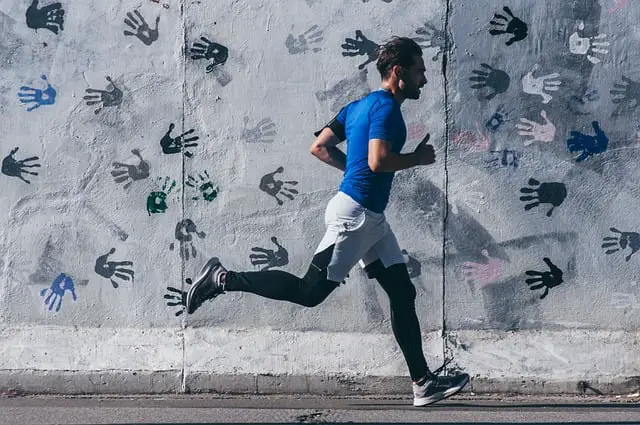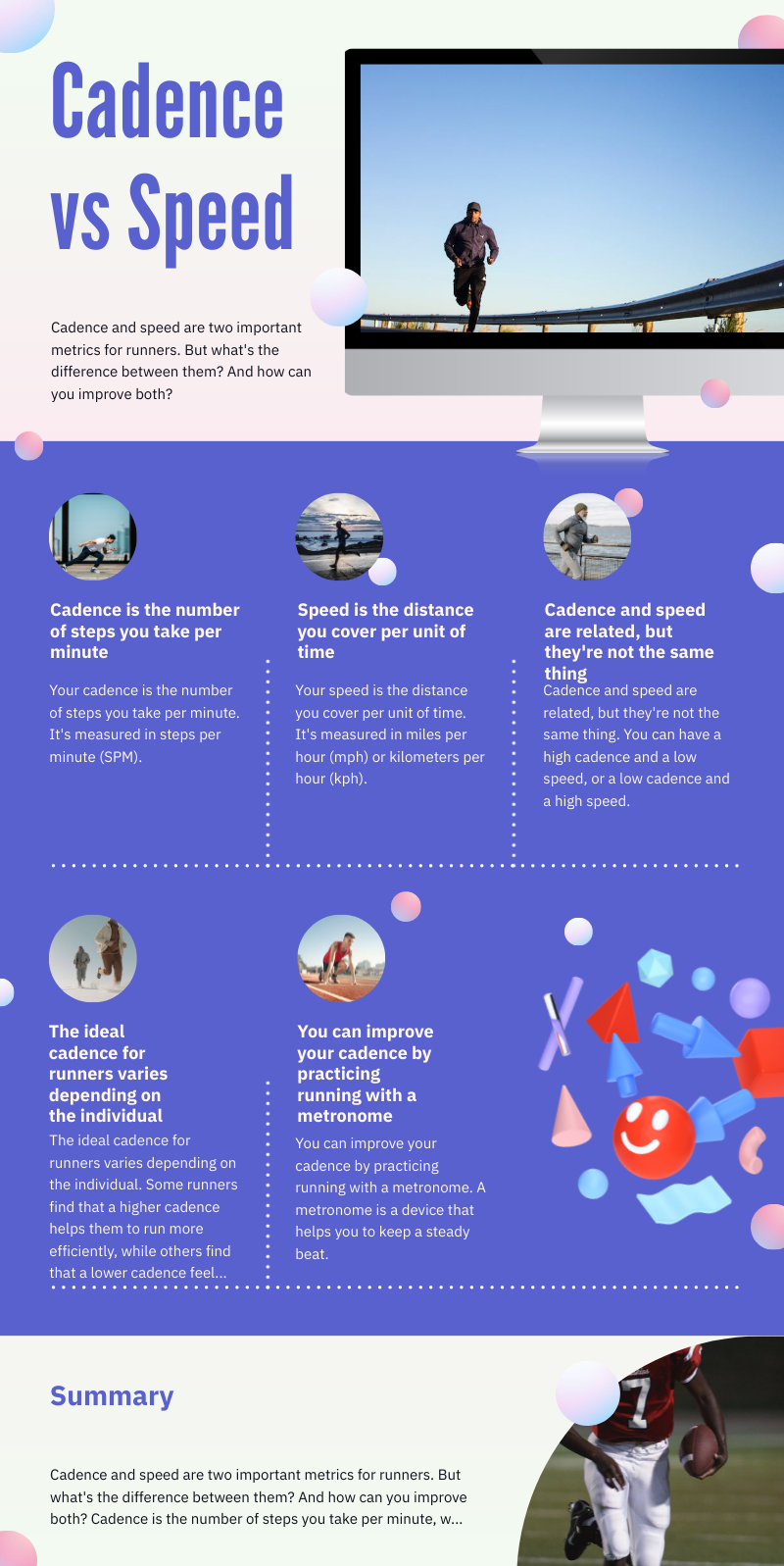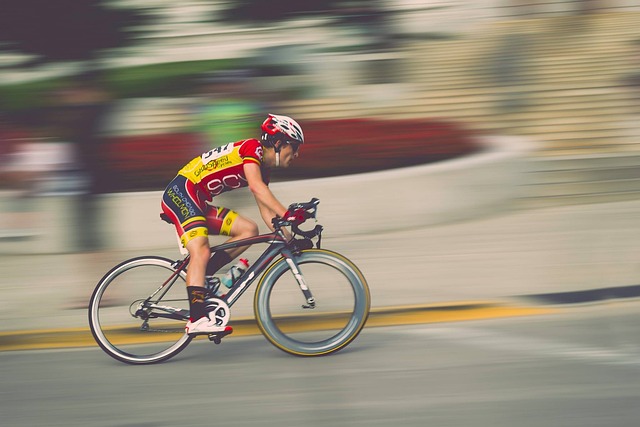Cadence is the rhythm of movement, often measured in steps per minute, while speed is the rate at which something travels a certain distance.
Did you know that cadence and speed are two crucial factors that can significantly impact your performance in various sports and fitness activities? While you may be familiar with the concept of speed, cadence is a lesser-known but equally important aspect to consider. In this article, we will delve into the differences between cadence and speed, and how they affect your performance in running, cycling, and other sports.
When it comes to sports and fitness, understanding the nuances of cadence and speed can make a world of difference. So, let’s explore the key differences and uncover the role they play in achieving your goals!
Key Takeaways:
- Cadence and speed are essential factors in sports and fitness activities.
- Cadence refers to the number of steps or revolutions per minute, while speed measures how quickly you cover a distance.
- In cycling, cadence is the speed at which you turn the pedals, while in running, it refers to the number of steps taken per minute.
- Cadence and speed influence efficiency, power output, and performance in various sports and fitness activities.
- Factors such as individual biomechanics, training level, and goals affect cadence and speed.
What is Cadence in Cycling?

In cycling, cadence refers to the speed at which a cyclist turns the pedals. It is measured in revolutions per minute (RPM) and can be tracked using sensors or power meters. A higher cadence means more pedal strokes per minute, while a lower cadence means fewer pedal strokes.
Cadence plays a significant role in cycling performance, as it affects efficiency, power output, and muscle activation. Maintaining an optimal cadence can help riders find a balance between speed and effort, resulting in improved endurance and overall performance.
Why is Cadence Important?
- An efficient cadence allows cyclists to generate power while conserving energy, reducing muscle fatigue during long rides.
- A higher cadence distributes the workload across multiple muscle groups, reducing the strain on individual muscles, such as the quadriceps.
- Optimizing cadence can improve oxygen utilization and cardiovascular efficiency, enhancing endurance and speed.
- A consistent cadence helps maintain a smooth pedaling motion and minimizes the risk of injury.
Measuring and tracking cadence can provide valuable insights into a cyclist’s performance and help them identify areas for improvement. By constantly monitoring and adjusting their cadence, riders can optimize their efficiency and power output, ultimately enhancing their cycling experience.
What is Cadence in Running?

In running, cadence measures the number of steps taken per minute, commonly known as steps per minute (SPM). This rhythm reflects your running pace and efficiency, varying among individuals and speeds. Higher cadence means a quicker turnover of steps, indicating a faster pace, while lower cadence suggests a slower pace. Discovering your optimal cadence is essential for saving energy, preventing injuries, and refining your running technique.
Cadence influences various aspects of running, including stride length, foot placement, and overall economy. Raising your cadence can enhance these elements, making your running more efficient and comfortable. Additionally, it reduces strain on muscles and joints, contributing to a smoother and safer running experience.
Measuring Cadence in Running
Measuring cadence in running can be done through various methods:
- Using a running watch or GPS device that provides cadence data
- Using a foot pod sensor that attaches to your shoe and tracks cadence
- Using a smartphone app or wearable fitness tracker with cadence tracking features
- Counting your steps manually for a set period of time and calculating the average cadence
These methods allow you to monitor and analyze your cadence during runs, helping you identify areas for improvement and track your progress over time.
The Importance of Cadence in Sports and Fitness
Cadence, the rhythm or tempo at which movements are performed, is a key factor in achieving optimal performance in various sports and fitness activities. Whether it’s cycling, running, swimming, rowing, or dancing, maintaining the right cadence can significantly impact your overall efficiency and effectiveness.
The Role of Cadence in Sports
In cycling, cadence refers to how fast a cyclist turns the pedals. Higher cadence means smoother pedaling, reducing muscle and joint strain, and minimizing fatigue, allowing for sustained high speeds. Conversely, lower cadence focuses on muscle strength, beneficial for uphill climbs or facing strong winds.
In running, cadence affects efficiency and injury prevention. Higher cadence leads to faster turnover, less time on the ground per stride, and reduced injury risk like shin splints. Finding the right cadence helps runners maintain speed with less effort, enhancing performance. Similarly, activities like swimming, rowing, and dancing rely on cadence for smooth, efficient movements, ensuring success in reaching goals and executing routines.
The Benefits of Optimal Cadence
Optimizing your cadence in sports and fitness activities offers several benefits. Some of the key advantages include:
- Improved efficiency and power output
- Reduced muscle fatigue and injury risk
- Enhanced endurance and stamina
- Better control and coordination
By understanding the importance of cadence and its impact on performance, athletes and fitness enthusiasts can make informed choices to improve their training routines and optimize their overall performance.
| Sport/Activity | Benefits of Optimal Cadence |
|---|---|
| Cycling | Improved pedaling efficiency, reduced muscle fatigue, enhanced power output |
| Running | Increased running economy, reduced ground contact time, decreased injury risk |
| Swimming | Enhanced stroke rhythm, improved overall efficiency |
| Rowing | Smooth and coordinated strokes, increased propulsion |
| Dancing | Flawless execution of movements, synchronization with music |
Differences Between Cadence and Speed in Cycling
In cycling, cadence and speed are closely related but not the same. Cadence measures how fast a cyclist pedals, while speed calculates how quickly they cover a distance. However, increasing cadence doesn’t always mean higher speed, as factors like gear, terrain, wind, and power output also influence speed.
Achieving peak performance in cycling requires finding the right balance between cadence and speed. While a higher cadence can lead to faster speeds, it might cause more fatigue. Conversely, a lower cadence offers more power but may result in slower overall speed. Cyclists must strike a balance that suits their goals and terrain to optimize performance and minimize strain. Understanding this relationship helps cyclists enhance their riding experience and reach their objectives effectively.
| Cadence | Speed | Effect |
|---|---|---|
| Higher | Higher | Allows for faster speeds, but may result in increased muscular fatigue |
| Lower | Lower | Provides more pedaling power, but may lead to a slower overall speed |
| Optimal | Variable | Strikes a balance that maximizes performance and minimizes strain or fatigue |
Differences Between Cadence and Speed in Running
In the realm of running, cadence and speed are closely related yet distinct variables that greatly influence performance and overall running experience. While cadence refers to the number of steps taken per minute, speed represents how rapidly an individual covers a specific distance. While increasing cadence may contribute to a faster running speed, it is essential to acknowledge that other factors also come into play.
Factors such as stride length, running form, and effort level are essential contributors to running speed. By focusing solely on cadence, one may overlook crucial elements that directly impact running performance. Stride length, for example, plays a significant role in how fast an individual covers a distance. Additionally, maintaining proper running form and exerting the appropriate level of effort are also vital factors that contribute to overall speed.

Factors Influencing Cadence and Speed in Sports and Fitness
Several factors play a significant role in determining cadence and speed in sports and fitness activities. These factors can vary among individuals and have a direct impact on performance. By understanding and considering these variables, athletes and fitness enthusiasts can optimize their cadence and speed for better results.
1. Individual Biomechanics
Each person has unique biomechanics that affect their cadence and speed. Factors such as body composition, muscle fiber type, and joint flexibility can influence how efficiently an individual moves and performs. Understanding one’s biomechanics can help in identifying strengths and weaknesses and adjusting cadence and speed accordingly.
2. Training Level
The training level of an athlete or fitness enthusiast can also impact their cadence and speed. Experienced individuals tend to have higher levels of cardiovascular fitness and muscular endurance, enabling them to sustain higher cadences and speeds for longer durations. Beginners, on the other hand, may need to focus on gradually increasing their cadence and speed as they build fitness and endurance.
3. Terrain
The type of terrain on which the activity is performed can have a significant impact on cadence and speed. Uphill or steep terrains generally require lower cadences and slower speeds to maintain stability and conserve energy. Conversely, flat or downhill terrains may allow for higher cadences and faster speeds due to the reduced resistance and gravity assistance.
4. Gear Selection
The gear selection, particularly in cycling, can influence cadence and speed. Choosing a higher gear (larger chainring and smaller rear cog) requires more force and can result in a slower cadence but potentially higher speed. Conversely, selecting a lower gear (smaller chainring and larger rear cog) reduces force requirements and can lead to a higher cadence but possibly lower speed. Adjusting gear ratios to match terrain and individual capabilities can optimize cadence and speed.
5. Intensity
The intensity of the activity directly affects cadence and speed. Higher intensities typically require higher efforts, resulting in increased cadence and speed. Conversely, lower intensities allow for a slower cadence and speed. Determining the appropriate intensity based on training goals, performance objectives, and individual fitness levels is essential for optimizing cadence and speed.
6. Goals
Goals, whether in competition or training, can influence cadence and speed. Sprinters, for example, may aim for higher cadences and shorter bursts of speed, focusing on explosive power. Endurance athletes, on the other hand, may prioritize maintaining a steady cadence and speed over long distances. Aligning cadence and speed to specific goals enhances performance and maximizes training outcomes.
Considering these factors and effectively adjusting cadence and speed can help athletes and fitness enthusiasts optimize their performance, improve efficiency, and minimize the risk of injury. By understanding and embracing the individuality of these factors, individuals can tailor their approach to cadence and speed to achieve their desired results.
Training and Improving Cadence and Speed
Training plays a crucial role in enhancing cadence and speed in sports and fitness activities. Whether you are a cyclist or a runner, incorporating specific training strategies can help you achieve better overall performance. Here are some effective training methods to improve your cadence and speed:
Cadence Training for Cyclists
Cyclists can benefit from incorporating specific cadence drills into their training routine. These drills focus on pedaling efficiency and help cyclists develop a smooth and consistent cadence. Here are a few cadence training drills for cyclists:
- High cadence intervals: Perform intervals where you pedal at a higher cadence than your usual comfortable pace. Start with shorter intervals and gradually increase the duration as your fitness level improves.
- Cadence pyramid: Begin with a low cadence and gradually increase it until you reach your maximum comfortable cadence. Then, decrease the cadence back to the starting point. Repeat this pyramid pattern multiple times during your training session.
- One-legged drills: Pedal using only one leg at a time, alternating between legs. This drill helps develop pedaling efficiency and balance.
Cadence Training for Runners
For runners, focusing on cadence drills can help improve running economy and speed. These drills aim to increase the number of steps taken per minute while maintaining proper running form. Here are a few cadence training drills for runners:
- Metronome training: Use a metronome or an app that provides an audible beat to match your desired cadence. Start with a comfortable cadence and gradually increase it over time.
- Interval training: Incorporate intervals into your running workouts, where you increase your cadence for a short duration, followed by a recovery period. Repeat these intervals to improve your ability to maintain a higher cadence.
- Plyometric exercises: Include jumps, bounds, and hops in your training routine. These exercises help improve muscle power and enhance your ability to maintain a higher cadence during running.
Remember to focus on maintaining proper technique and form while performing these cadence training drills. Gradually increase the intensity and duration of the drills as your fitness level improves.
Additionally, incorporating strength training exercises into your overall training routine can also help improve your cadence and speed. Strength exercises targeting the muscles involved in cycling or running can enhance power output and efficiency.
| Training Methods | |
|---|---|
| Cyclists | Runners |
| High cadence intervals | Metronome training |
| Cadence pyramid | Interval training |
| One-legged drills | Plyometric exercises |
Note: The table above summarizes the training methods for cyclists and runners. It showcases the specific drills recommended for improving cadence and speed in each activity.
By incorporating these training strategies into your routine, you can enhance both your cadence and speed, leading to improved performance in your chosen sport or fitness activity.
Benefits of Optimal Cadence and Speed
Maintaining an optimal cadence and speed in sports and fitness activities offers numerous advantages, positively impacting performance and overall well-being.
Energy Efficiency and Reduced Fatigue
Optimizing cadence and speed enhances energy efficiency during physical exertion. By finding the ideal balance, athletes and fitness enthusiasts can reduce unnecessary effort and minimize fatigue, enabling them to sustain their performance for longer durations.
Enhanced Endurance and Power Output
An optimal cadence and speed can significantly improve endurance in sports and fitness activities. By maintaining a consistent rhythm and pacing, athletes can extend their performance capacities, allowing them to push boundaries and achieve their goals. Additionally, maximizing power output through optimal cadence and speed leads to increased performance capabilities.
Better Biomechanics and Injury Prevention
Optimal cadence and speed promote better biomechanics, ensuring proper alignment and reducing the risk of injury. By maintaining a balanced and rhythmic movement pattern, athletes can minimize the strain on their muscles and joints, enhancing overall performance and reducing the likelihood of experiencing musculoskeletal injuries.
Improved Overall Performance
When athletes and fitness enthusiasts find the perfect balance between cadence and speed, they can unlock their true potential and enhance their overall performance. Whether it’s in cycling, running, or other sports and fitness activities, optimizing cadence and speed allows individuals to achieve peak performance and reach their desired outcomes.
Summary
Maintaining an optimal cadence and speed in sports and fitness activities provides a range of benefits, including improved energy efficiency, enhanced endurance and power output, better biomechanics, reduced injury risk, and overall performance enhancement. By understanding the importance of finding the right balance between cadence and speed, athletes and fitness enthusiasts can maximize their potential and achieve their goals.
Conclusion
Cadence and speed are crucial in sports and fitness, measuring different aspects of movement. Cadence counts steps or pedal turns per minute, while speed tracks how fast you cover distance. Both affect efficiency, power, and performance, with optimal cadence enhancing pedaling efficiency in cycling and promoting better running economy and lower injury risk in running.
While cadence and speed are linked, they’re distinct and influenced by various factors. For example, in cycling, besides cadence, gear, terrain, and wind affect speed. Balancing cadence and speed is vital for peak performance and energy use. Understanding this relationship helps athletes optimize their performance and achieve their fitness goals across different activities.
FAQ
What’s the difference between cadence and speed?
Cadence refers to the number of steps or revolutions per minute, while speed measures the rate at which you cover a distance.
How is cadence measured in cycling?
Cadence in cycling is measured in revolutions per minute (RPM) and can be tracked using sensors or power meters.
How is cadence measured in running?
Cadence in running is measured in steps per minute (SPM) and can vary among individuals and different running speeds.
What is the importance of cadence in sports and fitness?
Cadence plays a significant role in efficiency, power output, and muscle activation in various sports and fitness activities.
What are the differences between cadence and speed in cycling?
Cadence refers to the number of pedal revolutions per minute, while speed measures how quickly you cover a distance. Cadence is one of the factors that influence cycling speed, along with gear selection, terrain, wind, and power output.
How are cadence and speed different in running?
Cadence in running refers to the number of steps per minute, while speed measures how fast you cover a distance. Increasing cadence can result in a faster running speed, but factors like stride length, running form, and effort level also impact running speed.
What factors influence cadence and speed in sports and fitness?
Factors such as individual biomechanics, training level, terrain, gear selection, intensity, and goals can affect cadence and speed in sports and fitness activities.
How can training help improve cadence and speed?
Specific drills, interval training, and strength exercises can enhance cadence and speed in cycling and running, leading to improved performance.
What are the benefits of optimal cadence and speed?
Optimal cadence and speed improve energy efficiency, reduce fatigue, enhance endurance, optimize power output, promote better biomechanics, and prevent injuries.
What are the key takeaways on cadence and speed?
Cadence and speed are distinct elements in sports and fitness, with cadence referring to the number of steps or revolutions per minute and speed measuring how quickly you cover a distance. Optimal cadence and speed are crucial for performance and injury prevention.
Source Links
- https://www.linkedin.com/pulse/speedcadence-sensors-what-how-do-work-daisy-hu
- https://sifuentescoaching.com/resources/cadence-speed
- https://www.trainerroad.com/blog/whats-the-most-efficient-cycling-cadence-and-how-cadence-drills-can-make-you-faster/
Image Credits
Featured Image By – Pexels from Pixabay
Image 1 By – Pexels from Pixabay
Image 2 By –








